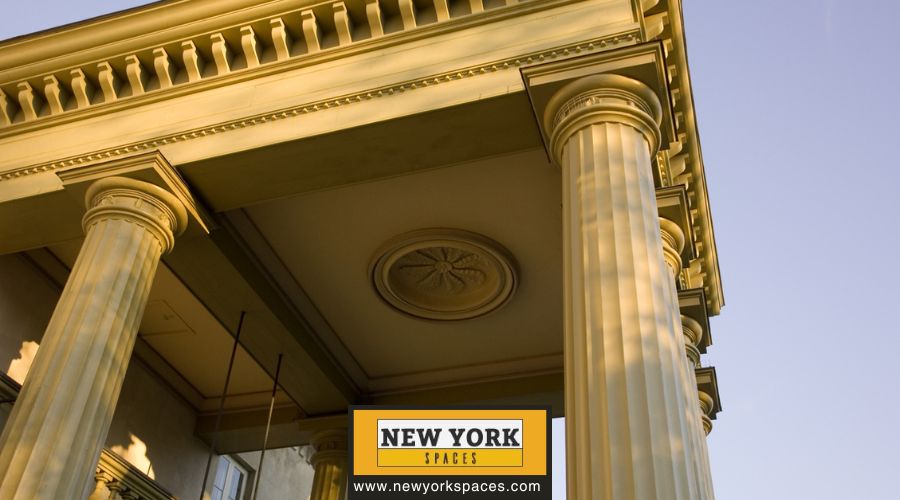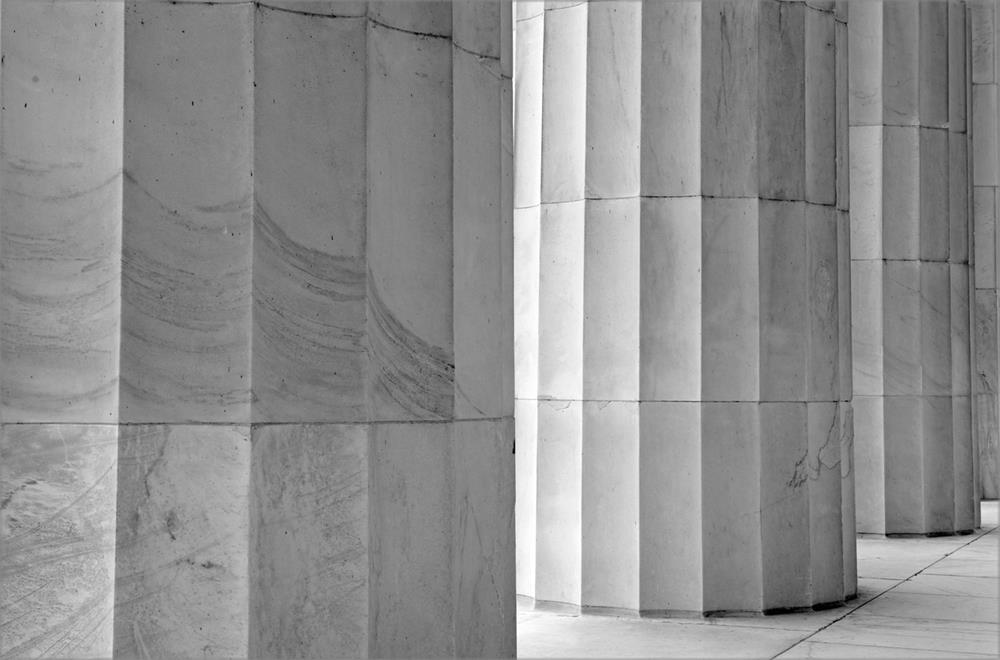Welcome to a journey through one of architecture’s most classic and beautiful parts: the fluted column. These columns, known for their grooves and enduring style, have been a part of building designs outside and inside since the old days. They are a favorite among architects, history buffs, and fans for their mix of strength and beauty. In this post, we will explore everything about fluted columns, uncovering their definitions, origins, and crucial role in architectural design.
The Role of Columns in Architecture
Columns have been fundamental architectural elements since ancient times, serving structural and aesthetic purposes. They provide support to the structures they adorn while also enhancing their beauty. The use of columns dates back to the earliest civilizations, where they were integral to the design of temples, public buildings, and even residential homes.
Unveiling Fluted Columns
Fluted columns are distinguished by their vertical grooves or channels along their shafts. This design feature contributes to the aesthetic appeal of the column and has historical significance, tracing back to the architectural traditions of ancient civilizations such as the Greeks and Romans.
Tracing the Origins of Fluted Columns
The history and origins of fluted columns are deeply rooted in ancient architecture, where they first appeared in the structures of Greece and later Rome. These columns were structural necessities and symbols of beauty, power, and sophistication. The evolution of fluted columns through the ages reflects changes in architectural styles and the transfer of cultural influences across civilizations.
The Anatomy of Fluted Columns
Delving into the anatomy of fluted columns reveals a world where form meets function in architectural design. These grooved pillars are more than just structural supports; they embody an aesthetic transcending centuries.
Physical Characteristics of Fluted Columns
Fluted columns are characterized by their vertical grooves, which vary in number, depth, and sharpness. These grooves are not merely decorative but crucial in defining the column’s visual and tactile qualities. The flutes’ interplay of light and shadow adds depth and dimension, making the column appear more dynamic and elegant.
The Significance of the Number of Flutes
The number of flutes on a column is not arbitrary; it often reflects the architectural style or period from which the column originates. For example, Doric columns typically feature 20 flutes, while Ionic and Corinthian columns may have 24. This distinction is not just a matter of aesthetics but also serves to identify the column’s historical and cultural context.
Variations in Fluted Column Designs
Fluted columns have evolved through various architectural styles, each bringing its unique interpretation and adaptation of the fluted design. From the simple and sturdy flutes of Doric columns in ancient Greece to the more elaborate and ornate Corinthian columns of Rome, fluted columns have been adapted to suit different architectural visions, materials, and technological advancements. This diversity reflects the rich tapestry of architectural history and the enduring appeal of fluted columns across centuries.
Historical Significance and Uses
Fluted columns were not merely architectural elements in ancient Greece and Rome; they symbolized power, democracy, and the divine. These structures played pivotal roles in the design of temples, forums, and public buildings, showcasing the time’s engineering prowess and aesthetic values.
Ancient Greek and Roman Mastery: In ancient Greece, fluted columns were integral to the Doric, Ionic, and Corinthian orders, each reflecting societal values and aesthetic preferences. The Romans later adopted and adapted these designs, further cementing the column’s place in architectural history.
Iconic Ancient Structures:
- The Parthenon in Athens, Greece, is a testament to the Doric order’s majesty, with its fluted columns embodying strength and simplicity.
- The Pantheon in Rome showcases Corinthian fluted columns, representing the pinnacle of Roman architectural refinement and complexity.
Symbolic Meanings: Fluted columns carried deep symbolic significance in ancient times. They were seen as representations of the harmony between humans and the gods, the strength of the state, and the pursuit of beauty and knowledge.
Fluted Columns in Modern Architecture
In modern architecture, fluted columns have been reinterpreted to bridge the gap between historical reverence and contemporary innovation. These elements continue to enrich buildings’ visual and textual landscape, adapting to new materials and design philosophies.
Adaptation in Modern Designs: Today’s architects draw inspiration from the past, incorporating fluted columns into various architectural styles. From neoclassical to minimalist, fluted columns add depth, texture, and a touch of grandeur to modern designs.
Materials Evolution:
- Ancient Times: Traditionally made from stone, including marble and limestone, which were chosen for their durability and beauty.
- Modern Times: Contemporary fluted columns utilize various materials, such as concrete, steel, and even synthetic materials, allowing for greater flexibility in design and application.
Modern Examples:
- The National Gallery of Art in Washington, D.C.: Features fluted columns that pay homage to classical traditions while seamlessly integrating into a modernist architectural language.
- The High Court of Australia in Canberra: Uses fluted columns more abstractly and contemporary, demonstrating this ancient architectural feature’s versatility and enduring appeal.
In historical and modern contexts, fluted columns serve as a bridge between the past and present, continuously evolving while maintaining their symbolic and aesthetic significance.
The Aesthetic Appeal of Fluted Columns
Fluted columns have captivated the architectural world for centuries, offering a blend of elegance, strength, and sophistication. Their timeless appeal lies in their ability to add depth and character to ancient and modern structures.
Enduring Popularity: The continuous use of fluted columns across millennia speaks to their universal appeal. Architects and designers value them for their versatility, ability to complement various architectural styles, and the instant grandeur they lend to any space.
Visual Dynamics:
- Shadow Play: The grooves in fluted columns create a play of light and shadow, enhancing the structure’s visual interest and dynamic appearance.
- Perception of Height and Elegance: The vertical lines of the flutes draw the eye upward, making the columns appear taller and the structure more imposing and elegant.
Interior vs. Exterior Design:
- Exterior Use: Fluted columns add majesty and gravitas to building facades, representing entry and design focal points.
- Interior Use: Inside, they can define spaces, add rhythm to long hallways, or serve as decorative elements that echo the building’s exterior architecture.
Challenges and Considerations in Using Fluted Columns
While fluted columns are aesthetically pleasing, their integration into architectural designs comes with challenges, from structural considerations to maintenance concerns.
Technical and Structural Considerations:
- It is paramount to ensure that fluted columns can bear the required load without compromising their integrity. This involves precise calculations and sometimes innovative engineering solutions, especially when using non-traditional materials.
- The design must account for the column’s base, shaft, and capital, ensuring they harmonize with the building’s overall architectural style.
Maintenance and Preservation:
- Historical Structures: Preserving the intricate details of fluted columns, especially in ancient buildings, requires specialized restoration techniques to prevent erosion and damage.
- Contemporary Buildings: Modern materials may be more resilient, but they also necessitate regular maintenance to address wear and tear, ensuring the columns retain their aesthetic appeal over time.
- Aesthetic vs. Functional Balance: Architects must distinguish between decorative beauty and structural utility. This involves choosing the right materials, dimensions, and placement to ensure the columns enhance the building’s functionality and aesthetic value.
Incorporating fluted columns into architectural designs demands thoughtful consideration of their historical significance, visual impact, and practical challenges, ensuring they enhance the structure’s beauty and integrity.
Conclusion
The enduring allure of fluted columns in architecture speaks volumes about their timeless beauty, structural utility, and symbolic significance. From their ancient origins in Greek and Roman architecture to their sophisticated adaptations in modern designs, fluted columns have transcended time, continually evolving while maintaining their iconic status. They embody a unique blend of aesthetic appeal and functional purpose, offering shadow play, perceived elegance, and a connection to the architectural past that is as strong today as it was millennia ago.
Despite the challenges in their use, including technical considerations and maintenance demands, the balance they strike between decorative grandeur and structural integrity makes them an indispensable element in the architectural lexicon. Fluted columns are a testament to human creativity and our ongoing quest to blend the old with the new, crafting spaces that are both majestic and meaningful.





